There are few things in life as peaceful and calming as paddling a canoe alone through a glassy lake. Not to mention that it’s also a great way to improve your fitness while enjoying everything that nature has to offer. So, it’s no wonder that canoeing is one of the most popular summer sports in the world.
But if you’re new to the sport, learning how to paddle a canoe alone can seem daunting. Not to worry – we’re here to help! In this post, we’ll teach you everything you need to know about paddling a canoe solo. So, pack your camping gear and get ready for an adventure!
Table of Contents
How to Paddle a Canoe Alone?
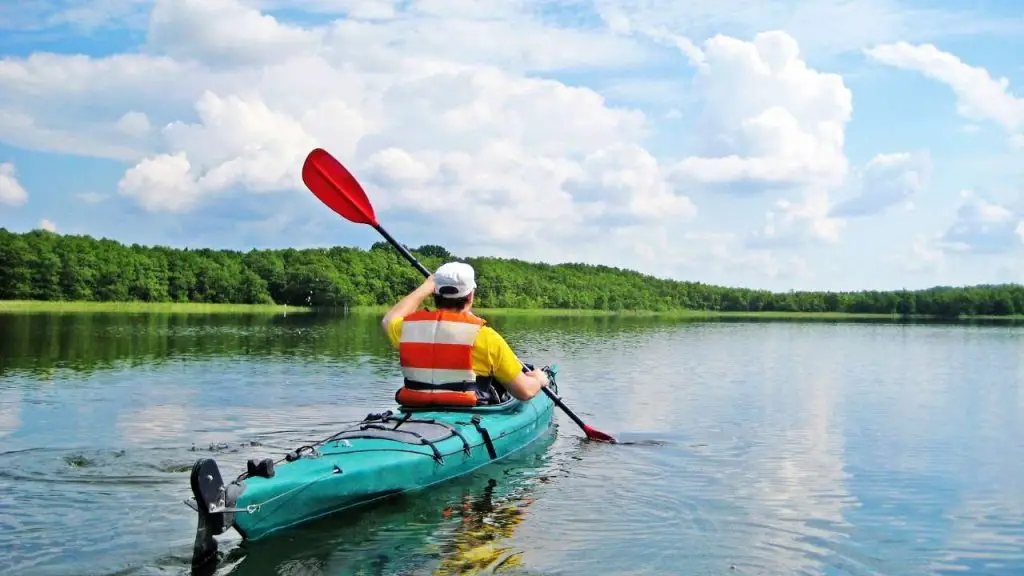
Paddling a canoe alone is not hard, below steps can help make it easier.
Step #1. Select a canoe that is stable and comfortable for you.
If you are a beginner, look for a wider and more stable canoe. Some of those canoe brands are Old Towne, Mad River and Wenonah.
Step #2. Place the canoe in the water.
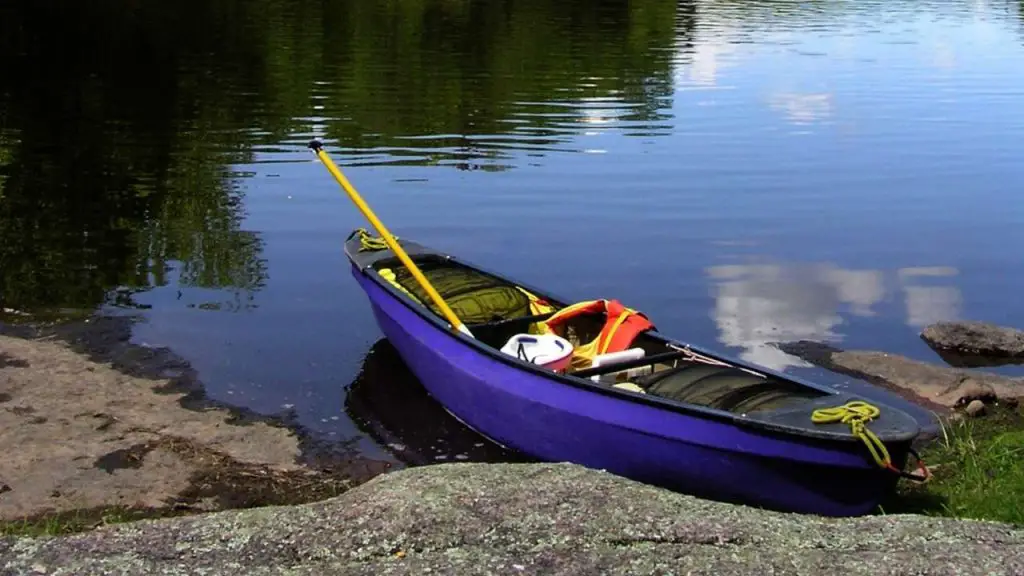
If you are paddling from a dock, gently push off from the dock and into the water. If you are paddling from the shore, enter the water and then get into the canoe from the water.
Step #3. Sit in the center of the canoe on the floor of the canoe.
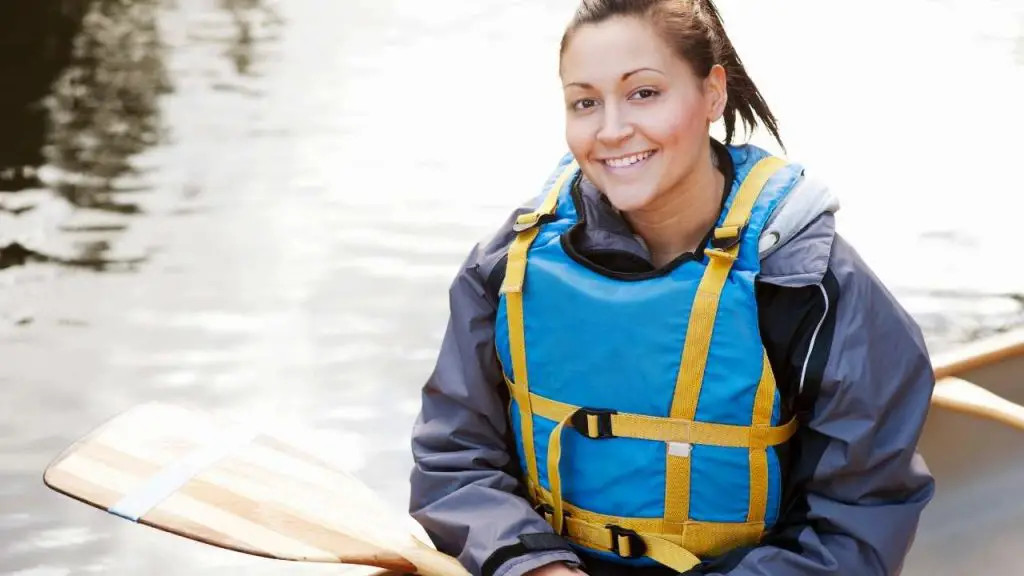
You may need to adjust your seating position until you find a comfortable balance point in the canoe.
Step #4. Place your paddle in the water and grip the paddle
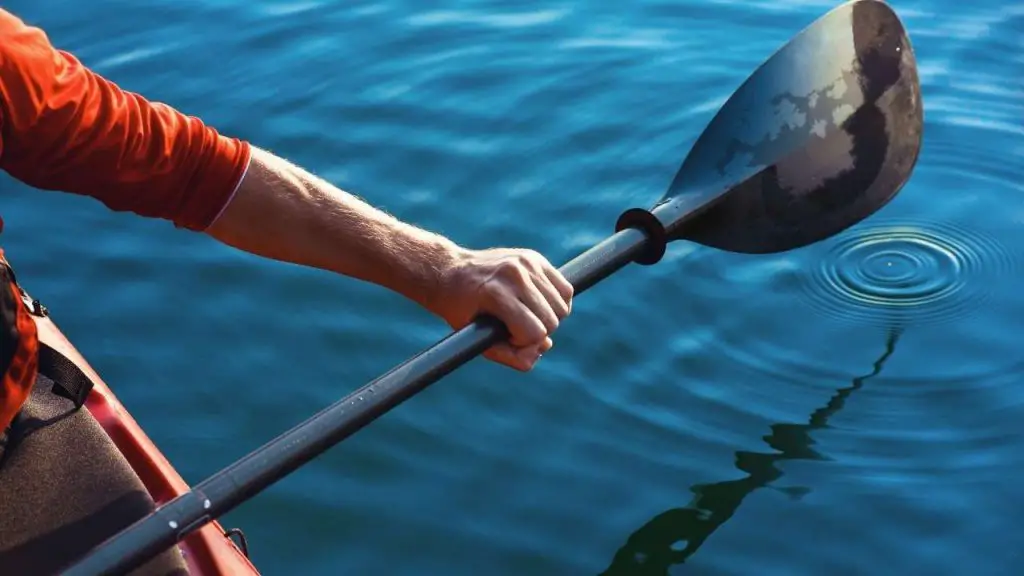
Grip the paddle with both hands.
Your hands should be about shoulder-width apart on the paddle.
Step #5. Move by J-Stroke
Draw the paddle through the water and then lift it out of the water on the other side of the canoe. Repeat this stroke on the other side of the canoe. As you become more comfortable with paddling, you can increase your stroke rate.
Step #6. Turn the canoe
To turn the canoe, paddle on one side of the canoe more vigorously than the other. For example, to turn the canoe to the right, paddle more vigorously on the left side of the canoe.
Step #7. Stop the canoe
To stop the canoe, simply stop paddling and allow the canoe to drift to a stop. You can also place your paddle in the water in front of the canoe and then use the paddle to slow the canoe down.
Step #8. Get out of the canoe
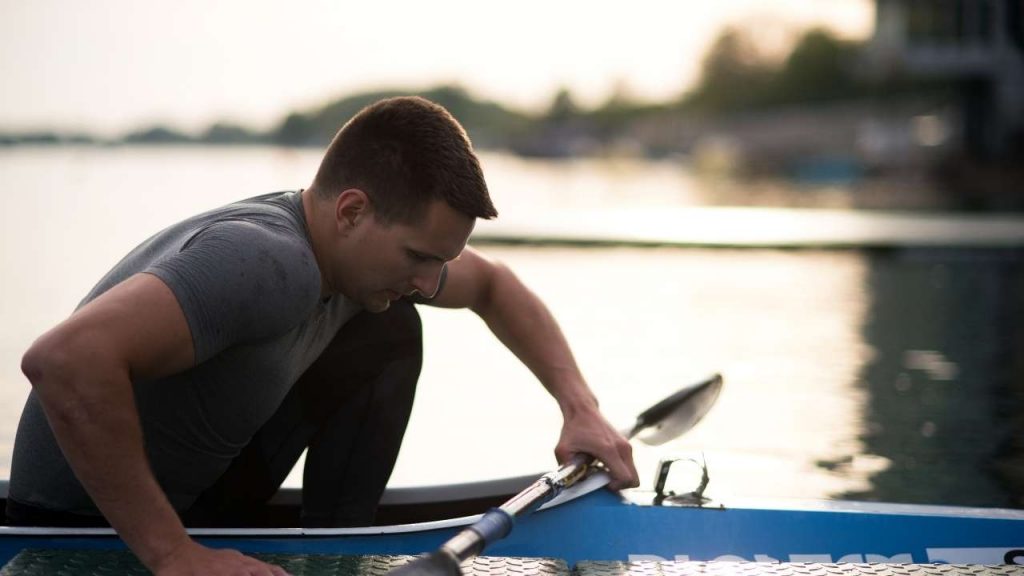
To get out of the canoe, simply step out of the canoe onto the shore or dock. Never step out when the canoe is not reaching the shore. Make sure that you are balanced before you get out of the canoe, or else it may tip over.
Five Tips to Paddle A Canoe Alone
Start with quick and easy sessions.
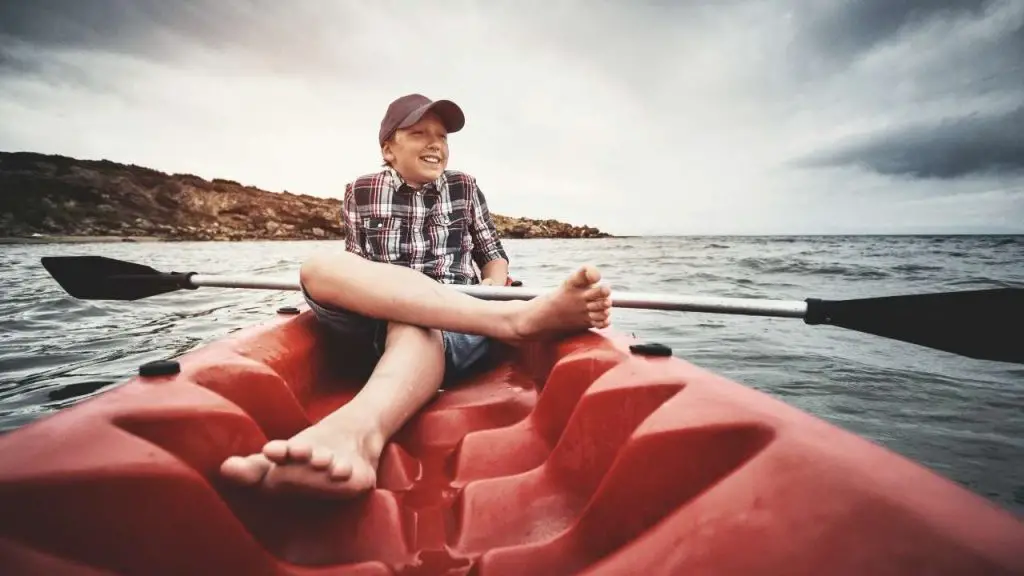
Whether you can run a marathon in under two hours without breaking a sweat or you can barely run five kilometers without getting winded, it’s essential to start slow with at least your first solo canoeing session.
Fitness, after all, isn’t the only aspect of the sport that paddlers need to hone.
Recovering from a capsized canoe and basic knot tying skills, for example, are all essential aspects of the sport that even the fittest individuals may need to work on too before embarking on that epic canoe ride.
When you’re more comfortable with your skills, you can enjoy longer sessions at more adventurous routes with confidence.
Pack right.
In any endeavor, failing to prepare is to prepare for failure. If you’re rearing to paddle a canoe alone, it’s crucial that you’ve done all the preparation you need to do.
This means packing everything that you might need from emergency communications devices, maps and navigation devices, insect repellent (if you’re canoeing in the jungle), and other items, depending on the circumstances of your trip.
Obviously, a 5-day excursion needs more packing than a quick canoeing day trip.
Choose the right paddle.
Not all paddles are created equal. Some designs are meant specifically for tandem canoeing, while others are more specialized for people who want to paddle a canoe alone.
Choose longer paddles with otter tail designs that prioritize maneuverability over speed.
Pick the right canoe.
Whether you’re buying or renting, the decision that will make the most impact on your entire trip is what type of canoe you’re going to use.
Recreational
For many solo canoeists, especially those who are just starting out in the sport, a recreational canoe is best as they’re generally more stable and maneuverable because of their well-balanced design and proportions.
Touring
However, touring and fishing canoes offer some advantages that typical solo canoeists may also want to consider. Touring canoes, for example, are longer than the average recreational design.
This does not only mean more storage space for gear, it also translates to a more streamlined design which directly influences the vessel’s ability to glide across the water.
Fishing
On the other hand, fishing canoes are crafted specifically for carrying and using fishing gear. Its weight capacity, therefore, is often much higher than other canoes. Additionally, these canoes often include rod holders and other accouterments that anglers would love.
Learn different strokes
One of the biggest frustrations for people who want to paddle a canoe alone for the first time is that it’s challenging to keep the movement straight. That’s because canoeing generally favors just one side.
Alternating Forward Strokes
For beginners, alternating forward strokes are perhaps the most intuitive for paddling a canoe alone. It entails simple strokes from the front to the back of the boat.
To counteract the boat’s natural tendency to turn to the paddling side, we simply need to transition to the other side of the boat.
While it’s perhaps the simplest stroke, it’s an energy-draining method that can make it difficult for most people to paddle for long periods.
J-stroke
The J-stroke is an excellent option in calm waters with no wind or current to consider.
It begins as a simple forward stroke, but as it comes across the paddler, the paddle is then rotated and turned away from the boat while maintaining the power side of the paddle across the entire stroke.
While the canoe is in a glide, you can use the paddle as a rudder correcting the trajectory while still in motion.
C-stroke
However, strong wind, current, or other outside forces may make it difficult for the J-stroke to compensate for the boat’s natural tendency to turn.
To help remedy this, a more aggressive correction with a C-stroke may be required.
This stroke is initiated by planting the paddle away from the canoe reaching as far across the water without tipping the boat.
Then, pull the paddle towards the boat and then out, forming a semi-circle while maintaining the power side of the paddle the entire time.
The Sweep
The C-stroke is also an excellent stroke for turning to the opposite of the paddling side while the boat still has forward momentum.
On the other hand, a reverse C-stroke is called a sweep and is typically used to turn the canoe towards the paddling side.
Wrapping Things Up: How to Paddle a Canoe Alone
Besides being an excellent whole-body workout, paddling a canoe alone is a great way to enjoy nature outdoors. It’s also a great way to relax since you’re not surrounded by technology and other distractions.
However, for the uninitiated, paddling alone can be scary as many risks are involved. Luckily, there are plenty of ways to get rid of your nerves about canoeing solo.
To summarize, if you want to paddle a canoe alone, it’s essential to start small with quick and easy sessions, bring the right tools, pick the best paddle for the job, position yourself correctly, and learn the different strokes that you may need.
Paddling a canoe alone can be rewarding, but it is crucial to learn all the basics before heading out on a long trip. By following these tips, you can make your canoeing experience safer and more enjoyable. Have you tried paddling a canoe solo? What advice would you add?



2 thoughts on “How to Paddle a Canoe Alone”